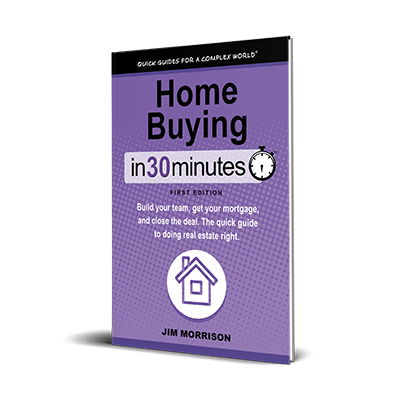About Home Buying In 30 Minutes
Buying a home is one of the most important purchases you will ever make. Whether you are buying a house, a condo, or a multifamily property, let housing expert Jim Morrison show you how to do it right. Topics include:
- Best practices for building a professional real estate team
- How to determine how much home you can afford
- Mortgages and down payments, and how to get the lowest mortgage rates
- Tips for making an offer on a house
- How to handle bidding wars
- When to waive real estate contingencies
- What to watch out for when touring homes
- How to work with home inspectors
- How house defects impact negotiations
This quick guide on how to buy a home in the United States uses plain-English explanations and lots of real estate examples from the author’s decades of experience as a professional home inspector and award-winning journalist covering the housing industry. Home Buying In 30 Minutes will give you a foundation of understanding and best practices as you and your real estate team evaluate homes, make an offer on the property, and close the deal.
